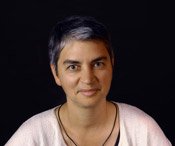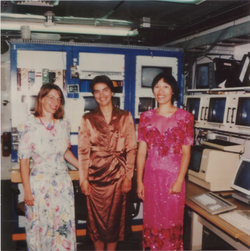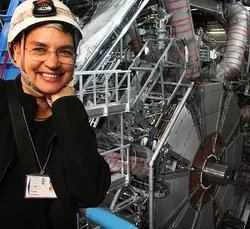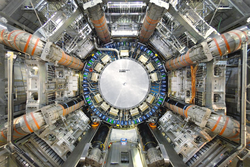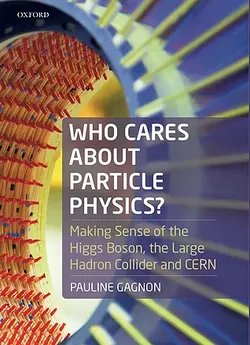Pauline Gagnon
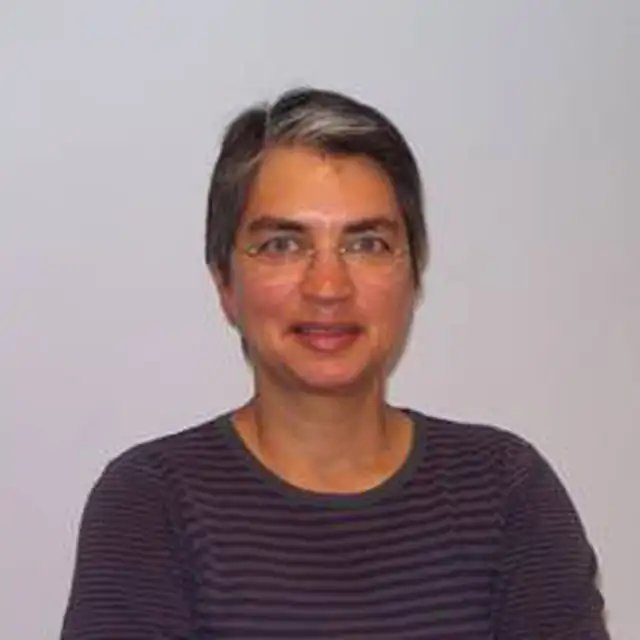
Pauline Gagnon
Early Life and Education
Pauline Gagnon, born 1955 in Quebec, Canada, attained her Bachelor's degree at Université du Québec à Montréal. After discovering her passion for physics through teaching at local colleges, she moved to California and attended San Francisco University to attain her Master's degree, then attended University of California for her PhD in particle physics.
Career
Pauline Gagnon first joined CERN, the European Laboratory for Particle Physics located near Geneva, in 1995.
She was most recently a particle and high energy physicist who worked with Indiana University as a Senior Research Scientist since 1999 until she retired in 2014.
CERN OPAL Experiment
The first initial project Gagnon was a part of within CERN was the OPAL experiment. OPAL was one out of four major detectors on the Large Electron-Positron collider (LEP). It was put in function from August 1989 to 2 November 2000, then dismantled the following year to construct the Large Hadron Collider (LHC). OPAL's central tracking system consisted of a silicon microvertex detector, a vertex detector, a jet chamber, and z-chambers.
Indiana University and ATLAS
After the end of the OPAL experiment, Gagnon began working on ATLAS while working with Indiana University as a Senior Research Scientist geared mainly towards dark matter studies.
ATLAS is one of two general detectors at the Large Hadron Collider (LHC). It is used to explore several subjects within physics, such as the search for the Higgs boson to extra dimensions and particles that could make up dark matter. Particle beams from the LHC collide to form debris in the ATLAS center to form new particles that are identified through different detecting subsystems. More than 3000 scientists, including Pauline Gagnon, from 174 institutes in 38 countries work on the ATLAS experiment. ATLAS is still working, with the latest update being a 5th anniversary celebration of the Higgs boson discovery.
From 2011 to 2014, Gagnon worked in the CERN Communications group writing blogs for the Quantum Diaries in both French and English.
Some of her more recent and popular posts include "Latest news from outer space on dark matter", "The forgotten life of Einstein’s wife", and "Many small steps but no giant leap".
Writing
In 2014, Pauline Gagnon took hiatus from CERN research to write a book entitled*Who Cares About Particle Physics: Making Sense of the Higgs Boson, the Large Hadron Collider and CERN.*It was published in July of 2016 by the Oxford University Press. The book was first released in French under the title: Qu'est-ce que le boson de Higgs mange en hiver et autres détails essentiels. It has since been translated to Chinese for Taiwan, simplified Chinese in China, Turkish and German.
It will soon be published in Iran and a greek translation is underway.
The overall intent of the book was to reach a broader audience with a more digestible language style for someone with no prior knowledge on particle physics.
The content consists of current knowledge, as well as expected discoveries within the field of particle physics.
It covers topics such as Standard Model, Higgs boson, Supersymmetry, and Dark matter. Additionally, it delves into various sociological aspects, including diversity, benefits of fundamental research, and operation style of large collaborations.
Current Work
Since 2013, Gagnon has been traveling over three different continents to give over 100 presentations and public talks on particle physics, diversity issues and the history of Mileva Maric Einstein.
Some locations include Canada, Finland, Scotland, Tunisia, Germany, South Africa, Turkey and onboard a cruise forScientific American. She has even acquired her own trademark phrase of "physics is too much fun to leave it only to physicists!" Lately, her efforts have concentrated on talking about her experience as a lesbian in physics and about ways to fight the isolation.
She is now dedicating most of her time writing a scenario to tell the plea of many female physicists, including the story of Mileva Maric Einstein, to show the difficulties women and members of other minority groups still face in physics.
